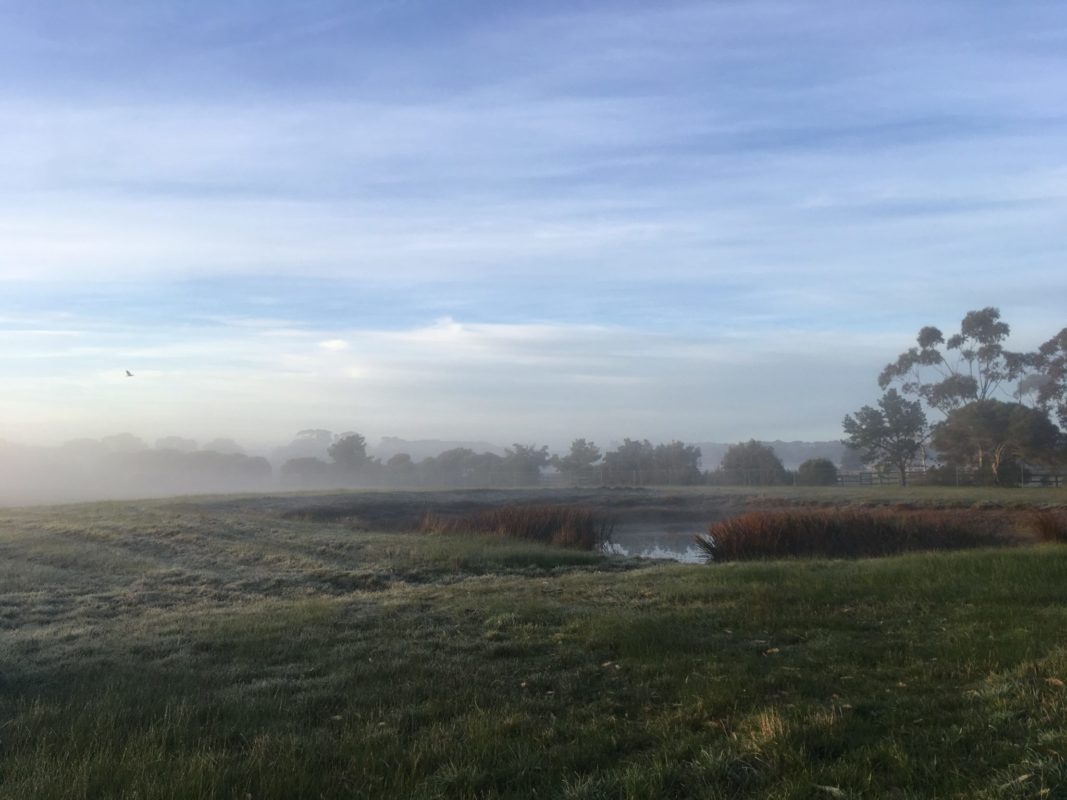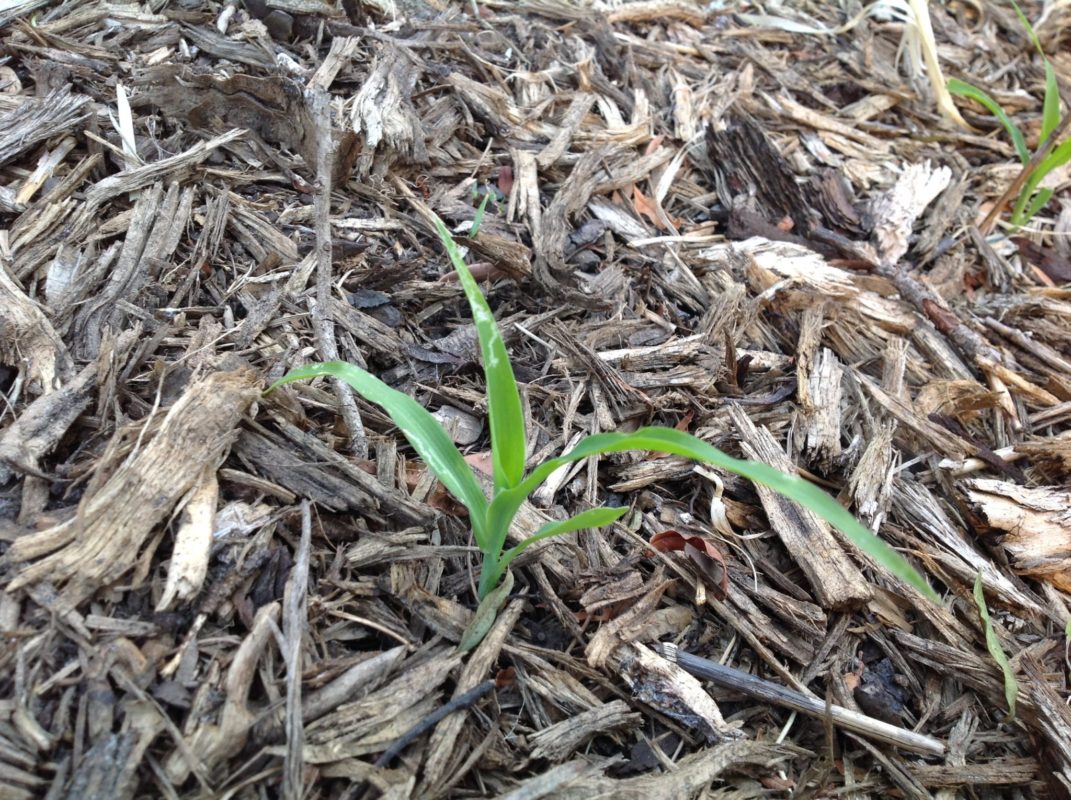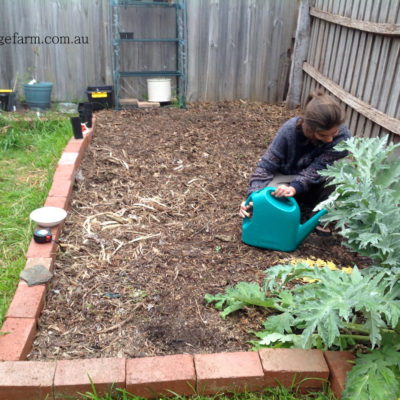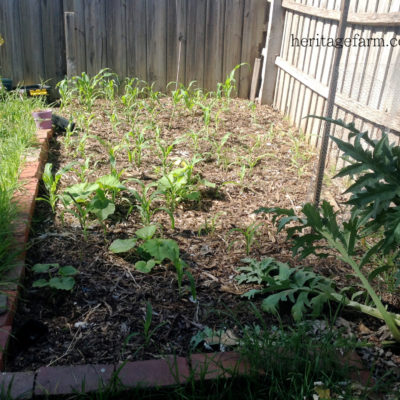As you may have noticed, I like wives tales, and how they relate to the garden. I figure, if people have been doing something successfully for a long time, then there must be something in it, even if we can’t scientifically explain why.
This is especially true for agriculture, because so much of small-scale sustainable farming is observation. Many years ago now someone observed that it’s best to plant corn when your peach blossom falls. This was observed by people before they knew the required germination temperatures of corn (over 15 degrees celsius), let alone what caused peach blossom timing.
But it works. Well, it works so long as you’re sensible and don’t plant your corn if a hail storm destroys you peach blossom 🙂
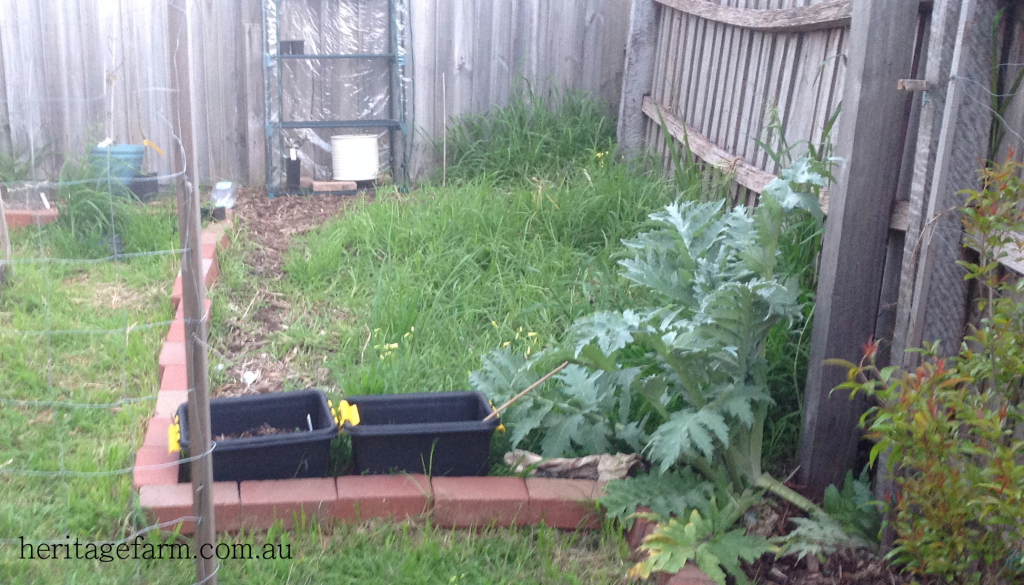
Of course, our peach tree blossomed before I was ready. This is a photo of the garden bed I was planning to put my corn seeds in. It was taken on the same day the first of the peach blossom fell. Clearly I needed to do some serious weeding.
This year I am growing popcorn rather than sweetcorn. I’ve bought two types of heirloom seed to experiment with and I’m incredibly excited about it. The first is a mini blue popcorn, from Damien at Mudflower. The second is a strawberry popcorn from Greenpatch Organic Seeds. Neither place have given me much information on their growing habits or recommended plant spacing, so this year is a bit of an experiment.
I plan to save seeds from both varieties, which means two things.
a) I need to make sure they don’t cross-pollinate. With corn, this means I need to plant them at least 1km away from each other (no chance in our teeny tiny backyard), or I need to time it so that they flower at different times. Usually your best bet is to plant a month apart, provided that they both have similar times to maturity. As I said, this year is a bit of an experiment: I think that they are both 100 days to harvest but I don’t know this for sure. To be safe, I’m planning 5 weeks between plantings. If dates aren’t your thing, plant your next round of corn when your first is 5cm tall.
b) I also need to make sure there’s enough genetic variability in my crop for a strong seed base. This is true to an extent for all seed saving, but it’s especially true for corn. A minimum of 100 plants (of each variety) need to have seed saved from them. I have planted about 120, assuming that there will be losses to heat, fungus and likely our rogue possum. I’ve already lost four plants to a chook who escaped her run.
If you are planning to save seed at home it’s worth noting that well dried and stored corn seed can keep for 5-10 years This means that as long as you store enough, you won’t have to go through this rigmarole every year!
One long day of weeding after seeing my peach blossom fall, and I had a bed seeded. It germinated in about a week and a half, and hit the recommended 5cm tall within 5 weeks:
You can see in the most recent photo I have some volunteer pumpkin plants coming up. I thought about pulling them out, but pumpkin is part of the traditional three sisters companion planting (corn, pumpkin and beans) so now I’m thinking about planting some beans instead of underplanting with clover or soybeans.
Linda Woodrow plants her corn intensively in a 30cm spaced diamond pattern. Elliot Coleman recommends a foot (or 30cm) spacing as well, but he plants two strips in a 30 inch row. I’ve planted more densely, in a 25cm diamond pattern. Partly this was an informed decision due to the dwarf nature of the plant. Partly it was the fact that otherwise I wouldn’t have enough space for the number of plants I need for a strong genetic base.
I’ll keep you updated when the ears start to form, and how pollination goes. Cross your fingers for me- I’m already looking forward to my homegrown popcorn come autumn!
Wanna read more about growing popcorn? Check out Chapter Two (White Fly and Other Pests) and Chapter Three (Planting Methods and Surprising Genetics).
